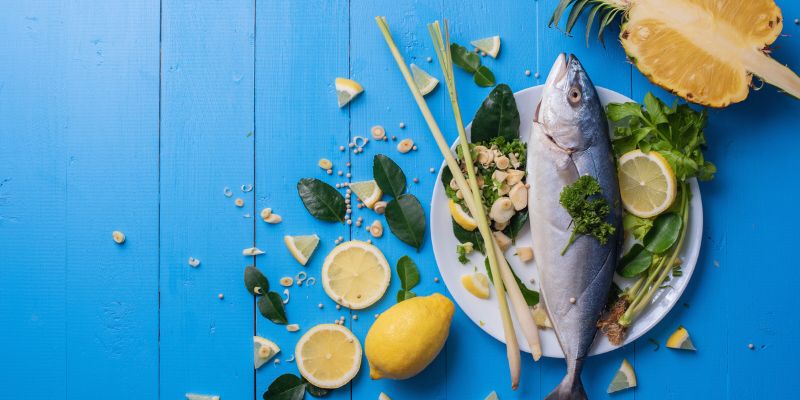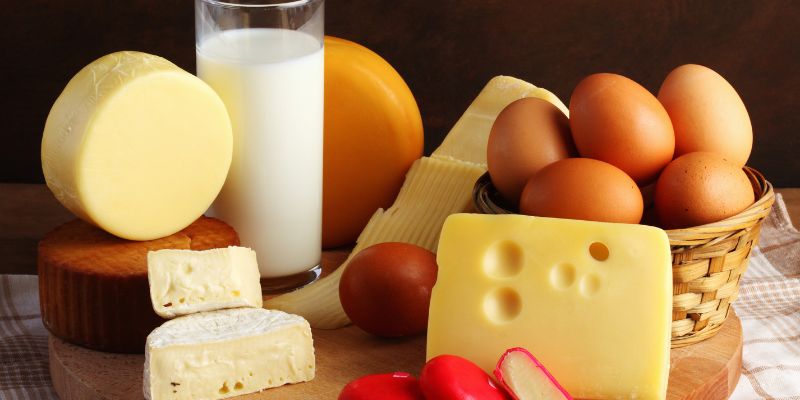Iodine is a vital mineral that you can obtain through diet. Seafood, dairy products, seaweed, beans, and citrus fruits are the most common and rich sources of iodine. Iodine is necessary for the thyroid gland to produce thyroid hormones. The growth of the brain, bones, and metabolism all depend on thyroid hormones.
For the majority of adults, the suggested daily intake of iodine is 150 mcg daily. A lack of iodine can result in hypothyroidism, which may lead to weakness, weight gain, and exhaustion, as well as goiter or swelling of the thyroid gland. To know more about the iodine-rich foods, continue to read this article!
Foods High in Iodine
Although iodine is present in many foods, seafood is where it is most frequently found. Those who want to add enough iodine to their daily meal should increase the consumption of the following foods:
Seaweed
Seaweed is one of the most beneficial natural sources of iodine. Vitamins, minerals, and antioxidants can all be found in seaweed. It has a few calories as well. The amount consumed might differ greatly depending on the type of seaweed, the area where it grew, and how it was prepared. Kombu kelp, wakame, and nori are three common types of seaweed.
- Kombu Kelp: Kombu kelp is brown seaweed, available in dry or crushed powder form. Like green vegetables, it can be added to soups, salads, and smoothies. As a side dish, it can be sauted, boiled, or steam-cooked.
- Wakame: Wakame has a mildly sweet taste. Miso soup is a typical use for it. It can also be combined with poke bowls, stir-fries, and salads or wrapped around a fish before baking.
- Nori: Nori is a form of red seaweed with a significantly lower iodine level. You can toast this baked seaweed and use it as a garnish for salads, soups, Asian noodle meals, and rice bowls.

Fishes
Fishes are a good source of vitamins, minerals, protein, and healthful fats. They are also an excellent source of iodine because they soak seawater, the most plentiful source of iodine on the planet. Cod, crab, scallops, shrimp, tuna and squid are examples of fish.
- Cod: Cod is an adaptable white fish with a moderate flavor and soft flesh. It provides an abundance of minerals and nutrients, including iodine, but it is comparatively low in fat and calories. The area where the cod was caught and whether it was farm-raised or caught outside can have a minor impact on the quantity of iodine it contains.
- Crabs: Despite having lower iodine content than other seafood, a 100-g portion of crab contains 2650 mcg. Crab has a lot of other vital nutrients in addition to being a rich source of protein. It supplies zinc, B12, and selenium.
- Scallops: Scallops have higher iodine levels. A single serving contains 135 mcg, or 90% of the RDI (recommended daily intake). They might also be good for the central nervous system and heart.
- Shrimp: Shrimp is a rich source of Iodine, nutrients and protein. They also contain important elements like phosphorus, selenium, and vitamin B12. Three ounces of shrimp provide about 23% of the daily value.
- Tuna: Tuna is high in protein, low in calories, and rich in iodine. Omega-3 fatty acids, which may reduce the possibility of heart disease, are also abundant in tuna. About 11% of the daily required amount of tuna can be found in three ounces.
- Squid: Each dish of squid, often eaten as calamari, contains roughly 65 mcg. It is also an excellent source of calcium, iron, omega-3 fatty acids, and vitamin C.

Dairy
Dairy products (milk, cheese, and yogurt) are major sources of iodine. The amount of iodine found in dairy products depends on numerous factors, such as:
- Milk: Iodine in milk is based on the iodine consumption of dairy cows, the season, the amount of milk produced, and the type of farming and processing. Generally, 85 mcg are found in one cup of nonfat cow's milk.
- Cheese: The concentration of iodine in cheese differs by variety. Cottage cheese is one of the better sources with 65 mcg per cup, while cheddar cheese has 12 mcg per ounce.
- Yogurt: Like other dairy products, yogurt is an excellent source of iodine. Just one cup of plain Greek yogurt can provide up to 116 micrograms of iodine.
Iodized Salt
The key component of a diet is iodized salt. It is the cheapest and most helpful way to avoid iodine deficiency. It is an especially good option for those who eat a plant-based diet because plant foods are typically an insufficient provider of iodine. Goiters, or swelling of the thyroid gland, are less common when iodine is added to table salt. 1/4 teaspoon of iodized salt contains about 71 mcg of iodine or 47% of the daily required amount. But sodium is also present in salt. In order to prevent or cure high blood pressure and kidney problems, iodine intake has dropped in recent decades in favor of limiting daily sodium intake.
Eggs
Iron, folate, vitamin B12, riboflavin, vitamin D, vitamin E, and protein are among the many vitamins and nutrients included in eggs. Iodine is abundant in eggs, and the yolk offers the majority of the nutrients. There are around 80 calories and 24 mcg of iodine in a boiled egg. Since iodine is given to poultry feed, therefore, egg yolks are a great source of it. However, just as the quantity of iodine in chicken feed can change, so can the amount in eggs. One big egg typically has 24 mcg of iodine, which is 16% of the daily need.
Conclusion:
Iodine is a vital element necessary for overall health. Dairy products, eggs, tuna, shrimp, and seaweed are the foods that contain the most iodine. The majority of table salt has also been iodized, making it simple to incorporate iodine into food. In addition to being among the top sources of iodine, the foods listed in this article are also highly nutrient-dense and simple to incorporate into your daily diet.











